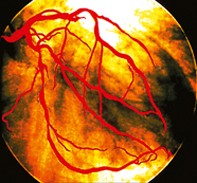Peer Reviewed
Feature Article Genetics
Familial hypercholesterolaemia – Part 2: Treatment options and screening approaches
Abstract
Undetected and undertreated familial hypercholesterolaemia (FH) is a lethal medical condition. Effective treatments are available for patients with FH; most patients will require a combination of dietary modification and pharmacotherapy to achieve target LDL-cholesterol levels.
Key Points
- The aim of lipid-regulating therapy is to achieve a target plasma LDL-cholesterol level of <2.6 mmol/L, as well as correction of any coexistent hypertriglyceridaemia and low HDL-cholesterol concentration.
- Although diet is the cornerstone of treatment of hypercholesterolaemia, it almost never suffices in achieving target LDL-cholesterol levels when used alone in patients with heterozygous FH.
- The three current drug treatment options for reducing LDL-cholesterol levels are bile acid binding resins, statins and ezetimibe.
- Other agents that could be added to statins to control dyslipidaemia, especially in patients with coexistent hypertriglyceridaemia and low HDL-cholesterol, include fibrates, nicotinic acid and fish oils.
- The present marked shortfall in the detection of FH highlights the need to develop a highly cost-effective screening and follow up program.
Purchase the PDF version of this article
Already a subscriber? Login here.

